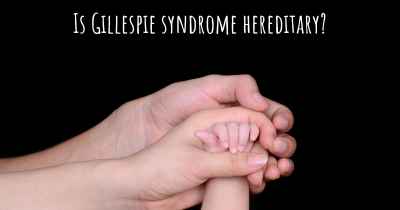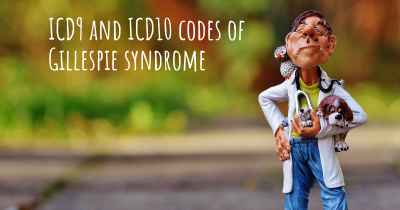What is the history of Gillespie syndrome?
When was Gillespie syndrome discovered? What is the story of this discovery? Was it coincidence or not?

Gillespie syndrome, also known as aniridia-ptosis-intellectual disability syndrome, is a rare genetic disorder that affects multiple systems in the body. It was first described by Dr. W. A. Gillespie in 1965, hence the name. This syndrome is characterized by the triad of aniridia (absence of the iris), ptosis (drooping of the upper eyelid), and intellectual disability.
The discovery of Gillespie syndrome:
In 1965, Dr. W. A. Gillespie, an ophthalmologist, reported a case series of six patients with a unique combination of symptoms. These patients presented with bilateral aniridia, ptosis, and intellectual disability. Dr. Gillespie recognized the pattern and named it Gillespie syndrome. His observations laid the foundation for further research into this rare disorder.
Genetic basis:
Gillespie syndrome is primarily caused by mutations in the ITPR1 gene, which is located on chromosome 3p26.2. The ITPR1 gene provides instructions for producing a protein called inositol 1,4,5-trisphosphate receptor type 1 (IP3R1). This protein plays a crucial role in the release of calcium ions from intracellular stores. Mutations in the ITPR1 gene disrupt the normal functioning of IP3R1, leading to the characteristic features of Gillespie syndrome.
Clinical features:
The three main features of Gillespie syndrome are aniridia, ptosis, and intellectual disability. Aniridia refers to the absence or partial absence of the iris, the colored part of the eye. This can cause sensitivity to light and reduced visual acuity. Ptosis, or drooping of the upper eyelid, can further impair vision. Intellectual disability varies in severity and can range from mild to profound. Individuals with Gillespie syndrome may also exhibit delayed motor development, speech difficulties, and behavioral problems.
Associated features:
While aniridia, ptosis, and intellectual disability are the core features of Gillespie syndrome, additional abnormalities can be present. These may include nystagmus (involuntary eye movements), strabismus (misalignment of the eyes), optic nerve hypoplasia (underdevelopment of the optic nerve), and hypotonia (low muscle tone). Some individuals may also have structural abnormalities of the brain, such as cerebellar atrophy or ventriculomegaly.
Diagnosis and management:
Diagnosing Gillespie syndrome involves a thorough clinical evaluation, including a detailed medical history, physical examination, and genetic testing. Genetic testing can identify mutations in the ITPR1 gene, confirming the diagnosis. However, it is important to note that not all individuals with Gillespie syndrome will have detectable mutations.
As Gillespie syndrome is a rare disorder, there is no specific cure. Treatment primarily focuses on managing the individual symptoms and providing supportive care. Regular ophthalmologic examinations are essential to monitor and address any visual impairments. Early intervention programs, including speech therapy and occupational therapy, can help individuals with intellectual disability reach their full potential. Genetic counseling is also recommended for affected individuals and their families to understand the inheritance pattern and potential risks in future pregnancies.
Research and future prospects:
Due to the rarity of Gillespie syndrome, research on this disorder is limited. However, ongoing studies aim to further understand the underlying genetic mechanisms and potential therapeutic targets. Advances in genetic technologies, such as gene therapy and targeted treatments, hold promise for future interventions. Collaborative efforts among researchers, clinicians, and affected individuals and their families are crucial in advancing knowledge and improving the quality of life for those with Gillespie syndrome.








